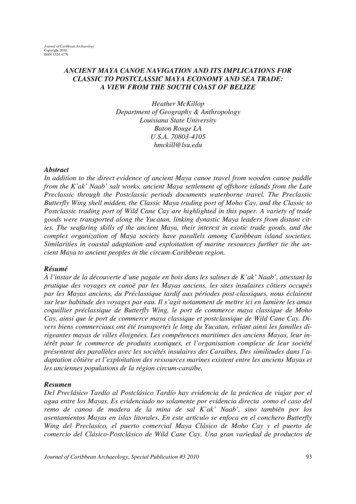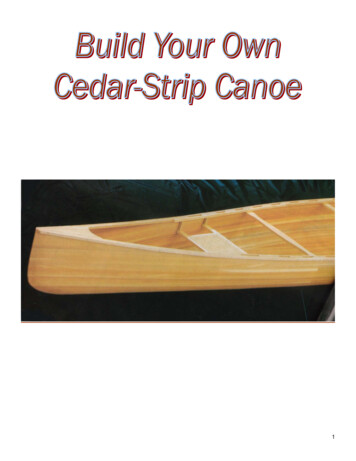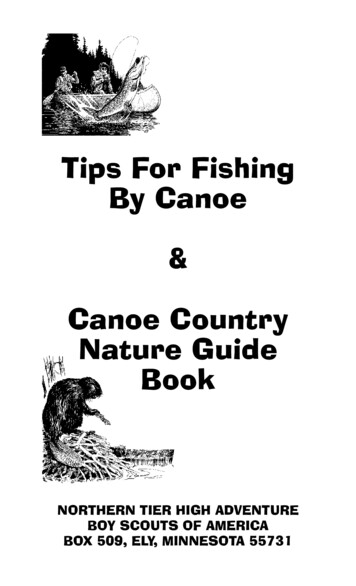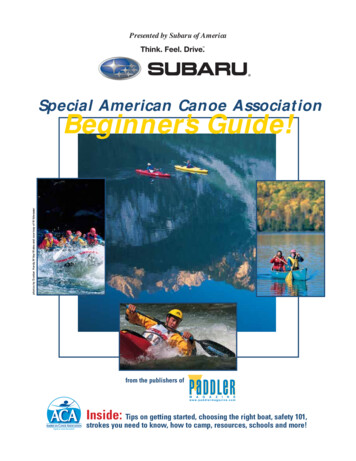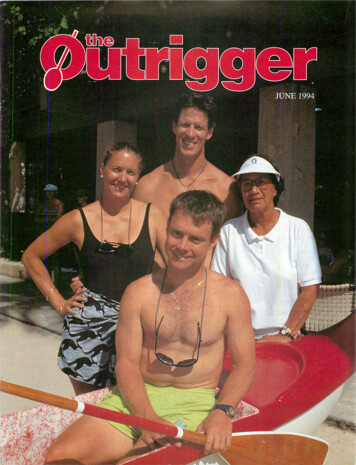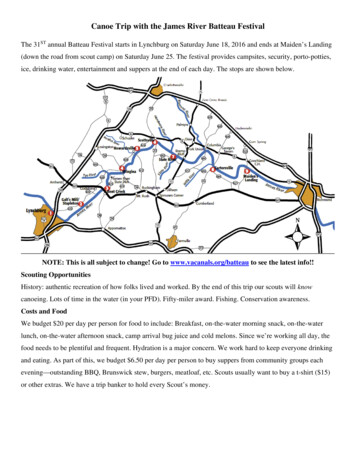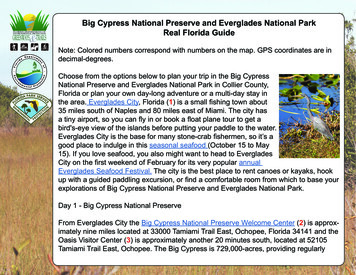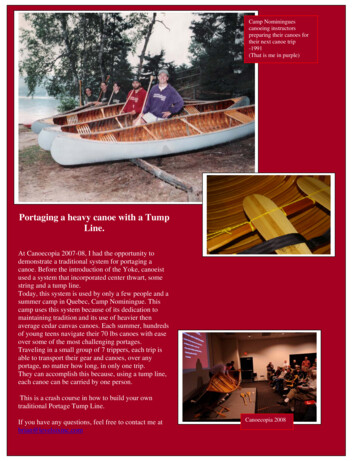
Transcription
Camp Nomininguescanoeing instructorspreparing their canoes fortheir next canoe trip-1991(That is me in purple)Portaging a heavy canoe with a TumpLine.At Canoecopia 2007-08, I had the opportunity todemonstrate a traditional system for portaging acanoe. Before the introduction of the Yoke, canoeistused a system that incorporated center thwart, somestring and a tump line.Today, this system is used by only a few people and asummer camp in Quebec, Camp Nominingue. Thiscamp uses this system because of its dedication tomaintaining tradition and its use of heavier thenaverage cedar canvas canoes. Each summer, hundredsof young teens navigate their 70 lbs canoes with easeover some of the most challenging portages.Traveling in a small group of 7 trippers, each trip isable to transport their gear and canoes, over anyportage, no matter how long, in only one trip.They can accomplish this because, using a tump line,each canoe can be carried by one person.This is a crash course in how to build your owntraditional Portage Tump Line.If you have any questions, feel free to contact me atbrian@levelsixinc.comCanoecopia 2008
Portaging a Canoe with aTump line: 101Part 1. Orientation1. Tump Line Attachment Point, 1.5inches forward of the CenterThwart.I now use a 2” Nylon Seat Belt webbingas opposed to the Leather version shownhere. Nylon stretches less and lasts farlonger then degradable leather, MyTump line is 1 yard long with 2 feet ofrope (3 mm thick) attached to each end.The Bow 2. Center Thwart replaces your centerYoke.I have only utilized this system using aCenter Thwart. I concept of using acontoured yoke instead seemsproblematic.I use 4 yards of 3mm cord to completethis Cow Hitch rigging system. Fourcow hitches will do it.3. Rope rigging on the Thawrt.This allows you to insert two paddleblades into the gaps, allowing you torest the blades on your shoulders whileyou get your Tump Line in place overyour head.What you will need:1 x Ash center thwart2 x Canoe paddles1 yard of 2” nylon Seat Belt Webbing for the Tumpline.2 x 12 inch long 3 mm Cord lengths to attached thetump line to the canoe.4 yards of 3 mm cord for center thwart rigging.2 x 10” cords to tie the paddle shafts to the bow seat.Ian Blatchford rigging his canoe for portage. CampNominingue, 1985.
Me and my mother, Diane Cooke at the end of our 10day Canoe trip in La Verendrye Park, Quebec, 1991.(Note the paddle shafts tied to the bow seat)Part 2. Detail InstallationThwart:Replace your Canoes Yoke with aCenter Thwart of the same length.Cord rigging:Attach a 3 mm cord to the gunwale justforward of the thwart.Tie a series of four cow hitches fromport to starboard with gaps wide enoughto insert two paddle blades. The tighterthe gap, the less play there will be whilecarrying the canoeHead Gap:Make sure that the gap between the twopaddles blades is wide enough for yourhead (and ears).Tump Line:Attached to each gunwale 1.5 inchesforward of the center thwart.The Bow
Detailed View:1. Tump Line attachment point. ( Ifyour gunwales are notscuppered, drill a hole betweenthe inwale and outwale, wideenough to insert a 3 mm cord.)2. Thwart cord rigging attachmentpoint.3. Cow Hitch4. Paddle5. Cow Hitch6. Head Gap7. Cow Hitch8. Paddle9. Cow Hitch10. Trucker HitchWhy a Tump and Not a Yoke?The answer is easy. A Yoke is designed to carry weight on your shoulders.But your shoulders are not designed to carry weight. If our canoe is heavierthen average, 65 lbs or more, then that weight should be carried on yourhead, which will transfer the load down your bodies frame. Your frame(spine) is designed to carry far heavier loads then you shoulders, so a heaviercanoe should feel lighter when carried using a tump line.
75 year old FM Van Wagner, thefounder of Camp Nominingueportaging a 70 lbs cedar canvasCanoe using a Tump LineNote the Tump Line strap runningunder the paddle blades and overhis head. The paddle shafts aresecured to the bow seat.Once you have the canoe on yourshoulders, slide the Tump Line overyour head. This will transfer the weightdirectly to your bodies frame.Note: the canoe is not resting on myshoulders. If the Tump line is adjustedright, there should be a ¼ inch spacebetween the paddle faces and yourshoulders. This will leave enough spacefor the canoe to rock while walkingover uneven ground.Demonstrating the carryingtechnique at Canoecopia 2008
A 12 year old Camp Nominingue canoe tripperportaging a 70 lbs cedar canvas canoe with aTump Line.1.Step 1. Rig your paddlesStep 2. The Roll2.Step 3. Watch you headStep 4. Place the canoe on yourshouldersStep 5. Slide the tump line ontothe top your head. Stand upstraight so the canoe lifts off yourshoulders.3.Step 6: Enjoy the portage.4.5.Demonstrating the technique at Canoecopia 2008.The canoe is a 17 foot Royalex Prospector fromNova Craft Canoe.
Nova Craft Canoe. Step 1. Rig your paddles Step 2. The Roll Step 3. Watch you head Step 4. Place the canoe on your shoulders Step 5. Slide the tump line onto the top your head. Stand up straight so the canoe lifts off your shoulders. Step 6: Enjoy the portage. A 12 year old Camp Nominingue canoe tripper port
